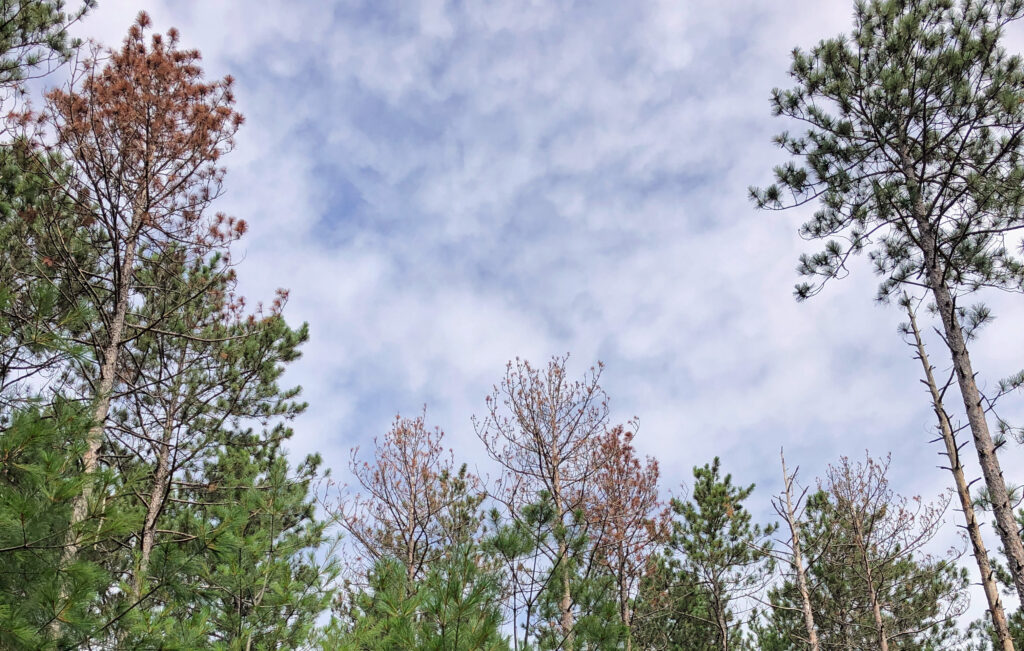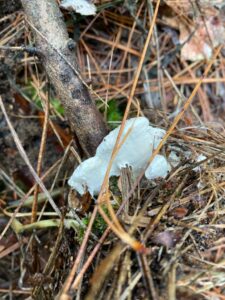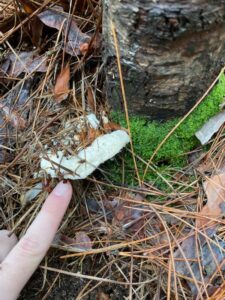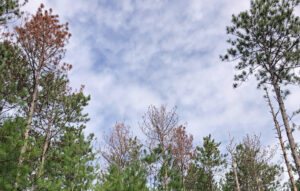
Getting to Know Your Forest Health Team: Alex Feltmeyer on Heterobasidion Root Disease (HRD)
By Denise Thornton
If you have conifers growing on your land, you should be aware of Heterobasidion Root Disease (HRD), formerly known as Annosum Root Rot. This fungus can kill your trees, and once it is established in the soil, there is no known way to get rid of it, according to DNR Forest Health Specialist Alex Feltmeyer.
HDR can kill red, white and jack pine as well as white spruce, Norway spruce, balsam fir, and has been found in red cedar. The most common and the biggest infections are commonly found in red and white pine plantations. This disease was only confirmed in Wisconsin in 1993. HRD is still not found everywhere in Wisconsin but has since been found in 30 counties. Research is ongoing, but its origin is presently unknown.

TRANSMISSION
The fungal spores are airborne. “We have found that the fungus comes in when there is a timber sale or thinning in plantations,” says Feltmeyer. “If the spores land on freshly cut stumps, they work their way to the roots. We often see one tree will become infected, then the trees around it will become infected, and it will progress outward in a circular pocket.”
Red pine growing near each other are root grafted together, so especially in a plantation planted closely —with roots touching underground — there is a pathway for the fungus to move into healthy neighboring trees.
SYMPTOMS
Once it gets into the system, HRD usually takes two to five years to kill a tree. “You start seeing thin crowns, reduced height, reduced branch growth. The most visible symptom is really thin foliage. Then the needles turn brownish, and the tree will die.” Feltmeyer says.
This fungus also produces a fruiting body, like a white bracket fungus on the base of affected trees that have been dead for a while. It stays in the same spot and adds new layers of growth every year. When it is really small, it can resemble popcorn. Owners can look for it by pulling back the needles around the base of a tree. Each of these fruiting bodies can produce millions of spores that can infect other trees.
MANAGEMENT

The only protection for HRD is to prevent it from getting into the soil. “The best prevention is to apply preventative stump treatment to freshly-cut stumps if you are within 25 miles of a known HRD infection. “We don’t focus on spraying old stumps,” Feltmeyer says.
The DNR Forest Health website has an interactive map that shows every known location of HDR with circles of 25 miles surrounding each one.
“If you are conducting timber sales or doing any silvicultural practice, we highly recommend that you apply the stump treatment during the harvest,” says Feltmeyer. She suggests two products that are used in Wisconsin.
Cellu-Treat is a borate-based chemical fungicide that kills any fungus that lands on the stump.
Rotstop is a biological control agent. “It’s another type of fungus that is native here in Wisconsin,” Feltmeyer explains. “When you spray it on the stump, it prevents HRD from developing.”
If a logger does work on your land, they will do the application and decide which material to use. “When Wisconsin first identified HRD, we made guidelines for managing pines on state land. Trunks need to be sprayed within 24 hours of being cut, and we required that the stumps be sprayed by loggers working on state land,” says Feltmeyer. “All the loggers got specialized harvester heads to spray the stumps as they are cutting the trees down.”
“If you are a private land owner, you can decide which treatment you want to use,” Feltmeyer says. “They are both equally effective and labeled for HRD in Wisconsin. The Wisconsin DNR does not mandate this treatment on private land, but we highly recommend it. The devastation of HRD far outweighs the treatment price.” HRD persists in infected stands for decades, so replanting red pines in infected sites would not be a good idea. Since all conifers in Wisconsin are susceptible, you would need an entirely new crop like a hardwood, which may not do well in some areas.”
Stump treatment is important between April 1 and Nov 30. If you are doing a winter harvest, it’s too cold to spray, because the equipment would freeze. Also, the spores aren’t being produced when it is that cold. “By the next year, stumps cut in the winter are no longer vulnerable to infection. Winter timber sale reduces the risk,” says Feltmeyer. “A lot of people do that.”

“This is something red pine growers everywhere should know about,” Feltmeyer emphasizes. “Regardless of your location, check the map to make sure you are not within 25 miles of an infestation.”
There are other conditions that affect red pine which look like HRD but are not as destructive. If land owners see dead or dying pines, it’s a good idea to contact their forest health specialist to get a positive identification. That requires lab diagnostics.
“We DNR forest health specialists do site visits,” Feltmeyer says. “We can do diagnostic work and also help with management.” To find the forest health specialist for your area check this map.
This map has recently been updated, so you may have a new forest health specialist for your area.
